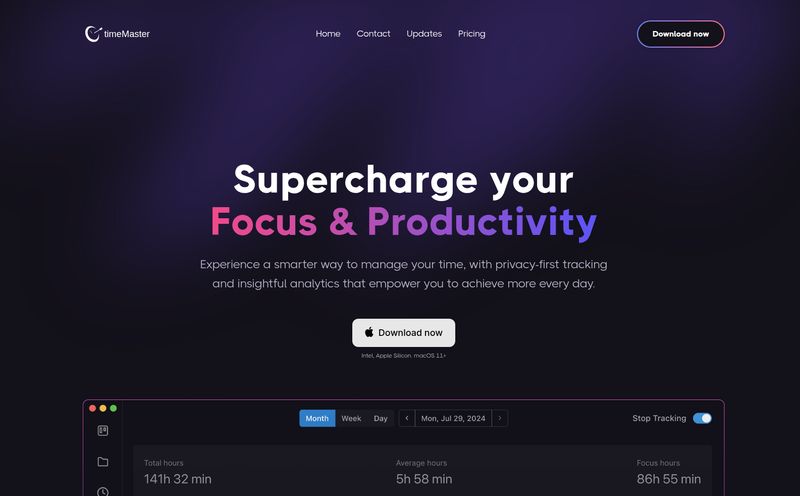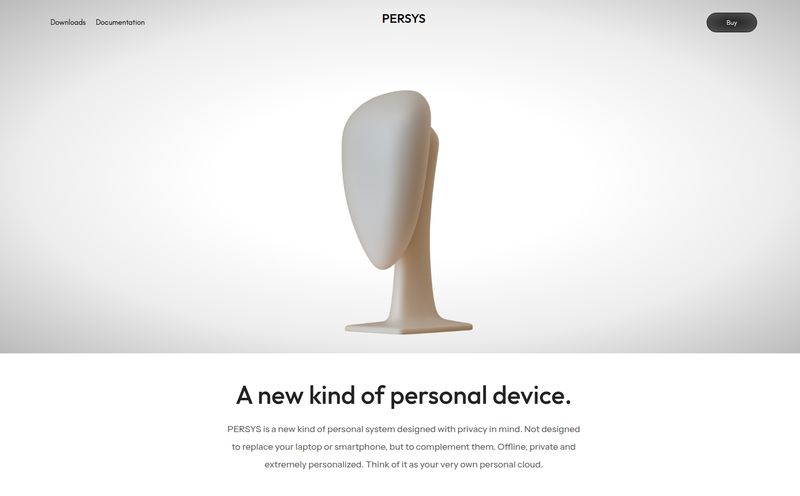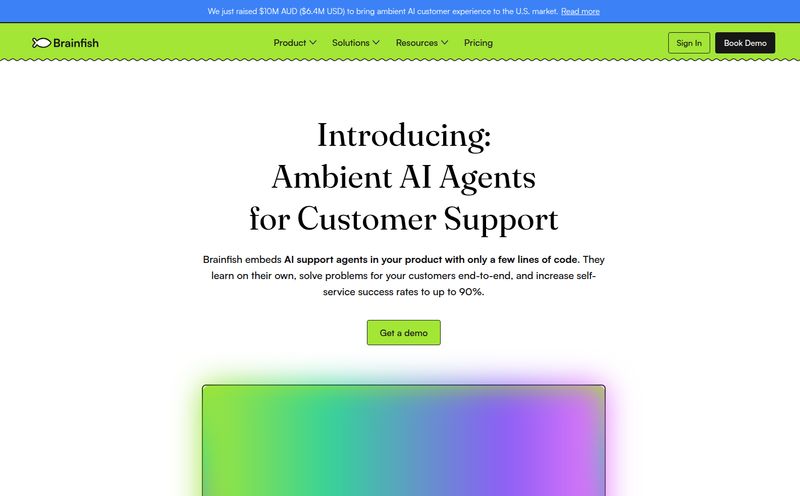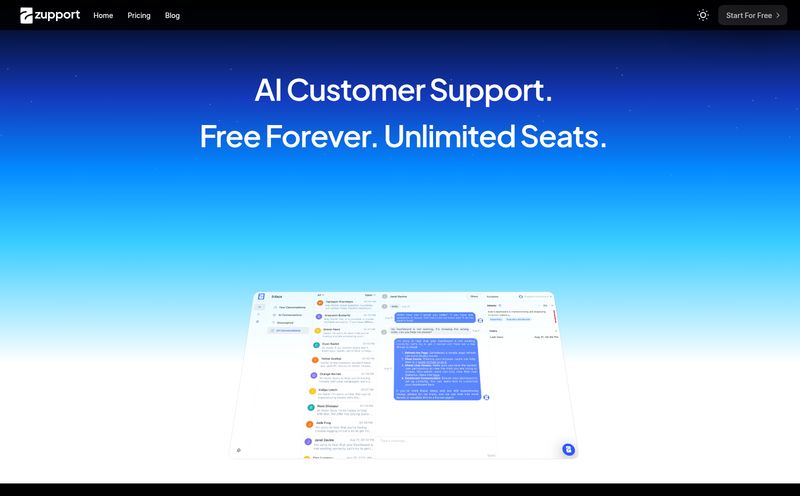Okay, let’s have a little heart-to-heart. How many tabs do you have open right now just for communication? One for your phone system, one for team chat, another for video calls, and probably a fourth for your contact center software. It's organized chaos at best. For years, we in the digital space have just accepted this juggling act as the cost of doing business. It’s like trying to cook a gourmet meal with a spork, a paper plate, and a microwave. You can do it, but it’s not pretty.
Then a tool like Dialpad comes along. I’d seen it mentioned on G2 and in a few industry forums, always with this heavy emphasis on “AI.” And I’ll be honest, my eyes tend to glaze over. “AI” is the new “synergy”—a corporate buzzword that can mean everything and nothing all at once. But I decided to actually look into it. And what I found was… well, pretty darn impressive.
So, is Dialpad just another piece of software promising to change everything, or is it the real deal? Let’s get into it. This is my no-fluff take on what it is, what it does, who it’s for, and—most importantly—what it costs.
So, What Exactly Is Dialpad Anyway?
At its core, Dialpad is an Ai-powered customer intelligence platform. That’s the fancy marketing term. In plain English? It’s a single platform that handles your business phone calls, video meetings, team messaging, and even your full-blown customer support center. It’s a beast. A feature-rich, AI-powered beast that aims to replace half the tabs you have open right now, and it does it all from the cloud.
Think of it as the central nervous system for all your business conversations. One app to rule them all, so to speak. And it's built for basically everyone, from a small startup trying to get a professional phone number to a massive enterprise with global support teams. The social proof is pretty solid too, with over 30,000 customers and a presence in more than 70 countries. They're not a small fish in this pond.
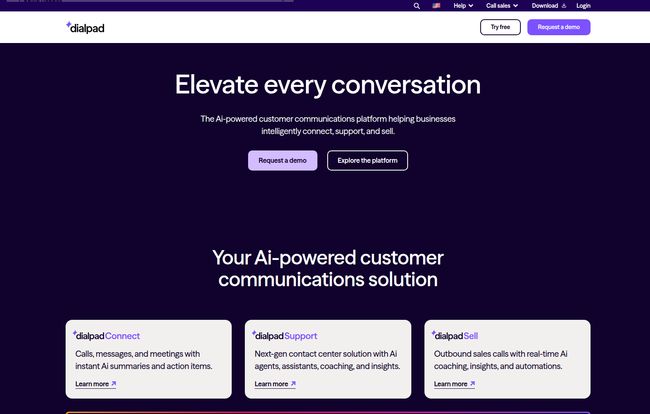
Visit Dialpad
The AI Here Isn't Just a Gimmick
This is where I went from curious to genuinely interested. Dialpad’s AI isn’t just bolted on; it feels woven into the fabric of the product. They call it “Ai that accelerates work,” and from what I’ve seen, that’s not just talk. This is where the magic happens.
Live Transcripts and Smart Summaries
Have you ever been on a call, frantically trying to take notes while also trying to, you know, listen and contribute? It’s a nightmare. Dialpad’s AI transcribes calls and meetings in real-time. You can literally see the words appear on your screen as they’re spoken. For me, this is a game-changer. It frees you up to be fully present in the conversation.
And it gets better. After the call, you don't just get a giant wall of text. The AI creates an “Ai Recap” with a concise summary, highlights, and a full transcript. No more “Wait, what did we agree on?” debates a week later.
Action Items and Sentiment Analysis That Actually Work
In my book, the real power isn't just the transcription but what the AI does with it. It’s smart enough to detect action items. If someone says, “I’ll get the report over to you by Thursday,” the AI flags it. It can even analyze customer sentiment. Is the customer happy? Frustrated? The AI can tell you, which is an incredible advantage for sales and support teams who need to read the room, even when the room is a phone line.
Real-Time Coaching for Your Team
This feature is just wild. For contact centers, the AI can act as a real-time coach for agents. Let’s say a customer mentions a competitor’s name. A card can pop up on the agent’s screen with pre-approved talking points. If a customer sounds upset, it can offer de-escalation tips. Look at the RE/MAX case study they feature—a 3-week reduction in core product training time. That's not just a cool feature; that's a direct impact on the bottom line. It’s like giving every agent a seasoned pro whispering in their ear.
Let's Talk About The All-In-One Platform
The AI is the sizzle, but the all-in-one platform is the steak. Unifying your communcations tools isn't just about convenience; it’s about efficiency. When your phone system talks to your messaging, which talks to your contact center, you eliminate data silos and wasted time. Everything is just… there.
Dialpad Connect for Your Core Business
This is their bread and butter product line. It's the unified communications (UCaaS) part of the deal. It combines voice, messaging, and meetings. You get a business phone number that works on your computer or your cell phone, you can start a video call with a single click, and you have persistent chat threads with your team. It’s what most small-to-medium businesses need to untangle their comms mess.
Specialized Tools for Sales and Support
Dialpad also offers dedicated platforms for sales and support teams, aptly named Dialpad Sell and Dialpad Support. These build on the core platform with specialized features. For sales, that might mean power dialers and deep Salesforce integration. For support, it's about advanced call routing, queue management, and all those AI coaching features we talked about. This shows they understand that different departments have different needs.
Dialpad Pricing: Hitting the Financial Nail on the Head?
Alright, the all-important question: what’s this going to cost me? The pricing is surprisingly transparent, which I always appreciate. Here's the breakdown for their main 'Dialpad Connect' offering.
| Plan | Price | Who It's For |
|---|---|---|
| Standard | $15 per user/month | Small teams and startups needing a professional, unified system for calls and meetings. Includes AI recaps. |
| Pro | $25 per user/month | Growing businesses that need more power. Adds CRM integrations (a big one!), global SMS, and multi-office support. |
| Enterprise | Contact for Pricing | Large organizations needing enterprise-grade features like a 99.99% uptime SLA, single sign-on (SSO), and advanced security controls. |
In my opinion, the Pro plan at $25 is the sweet spot for most businesses. The jump from Standard is worth it for the CRM integrations alone. And hey, they offer a 14-day free trial, so you can take it for a spin without reaching for your wallet. That's a confident move.
Okay, But What Are the Downsides?
No tool is perfect, and a good review has to be balanced. It's not all sunshine and rainbows. First, the per-user pricing model can add up quickly if you have a large team. You have to do the math and weigh the cost against the efficiency gains. Second, some of the really juicy features, especially advanced integrations or security protocols, are locked away in the higher-tier Pro and Enterprise plans. That’s a pretty standard SaaS playbook, but it's something to be aware of. Lastly, as a cloud-based platform, your experience is tied to your internet connection. A spotty connection will impact call quality—but that’s true for any VoIP service out there.
So, Who Is Dialpad Actually For?
After digging in, I think Dialpad really shines for a few specific groups:
- Startups and SMBs: Companies that want to ditch their clunky, old-school phone systems and appear more professional without breaking the bank. The Standard plan is perfect for this.
- Growing Companies: Businesses that are feeling the pain of having too many disparate tools and want to consolidate into a single, scalable platform. The Pro plan feels built for them.
- Sales and Support Teams: Any team that lives on the phone or in meetings will see a massive benefit from the AI features for coaching, transcription, and insights. This is where the ROI really becomes clear.
Frequently Asked Questions About Dialpad
Can I use Dialpad internationally?
Absolutely. They state that Dialpad is available in over 70 countries, and the Pro plan includes global SMS. It's built for teams that aren't all in the same room, or even the same continent.
What are the main Ai features in Dialpad Connect?
The big ones are real-time transcription for calls and meetings, Ai-generated summaries and recaps, and the ability to detect action items. It's all about automating the busywork around conversations.
What kind of devices can I use Dialpad on?
Pretty much anything with an internet connection. They have a desktop app for Mac and Windows, a mobile app for iOS and Android, and you can even run it straight from a web browser. Very flexible.
Is it difficult to set up?
From everything I've seen, no. It’s designed to be a self-service, easy-to-deploy platform. You can port over existing numbers or get new ones in minutes. No IT degree required.
Does it integrate with other business tools?
Yes, and this is a huge selling point. The Pro plan unlocks integrations with key platforms like Google Workspace, Microsoft 365, and major CRMs like Salesforce and Zendesk. This is critical for creating a connected workflow.
Final Thoughts: My Verdict on Dialpad
I came in skeptical of the AI hype, but I’m leaving impressed. Dialpad seems to have built a genuinely smart, cohesive, and user-friendly platform that solves a real problem. The chaos of modern business communication is a huge, silent productivity killer, and Dialpad takes a direct shot at solving it.
It’s not the cheapest option on the market if you're just counting pennies, but its value isn't just in making calls. It's in making those calls smarter, more productive, and easier to manage. If you're drowning in a sea of communication apps and looking for a lifeboat, Dialpad is definitely one worth grabbing. Give the free trial a shot—what have you got to lose?
